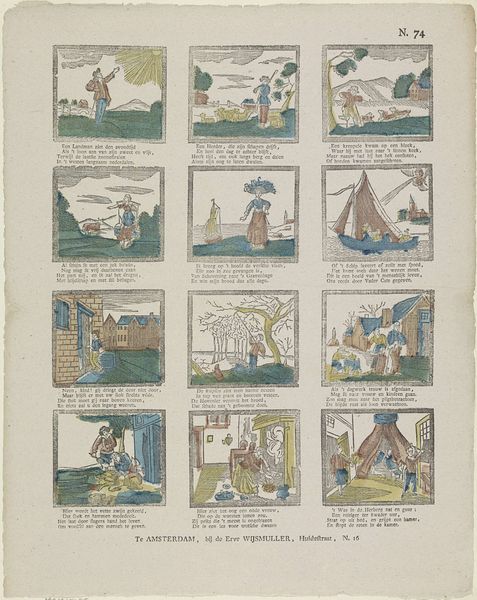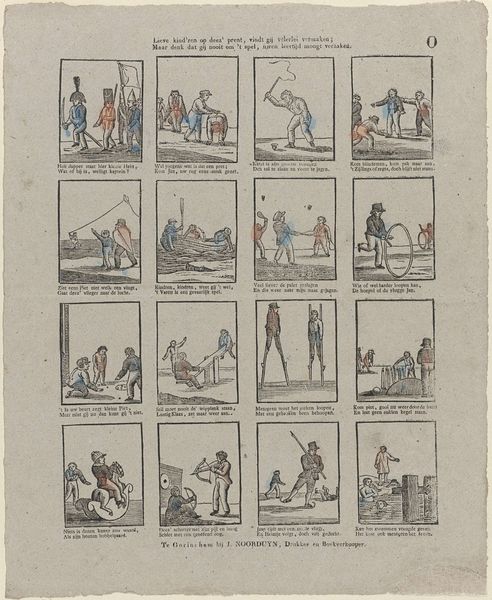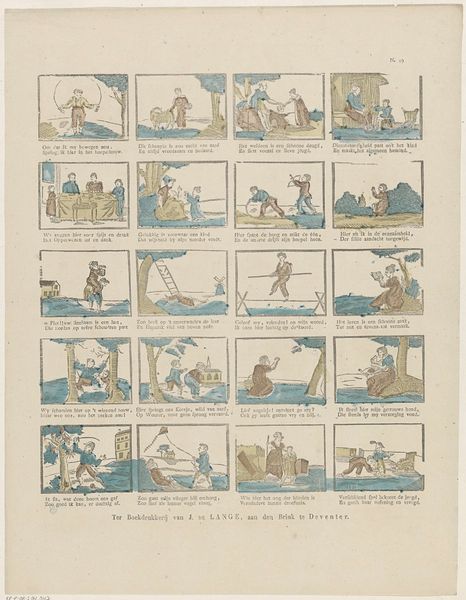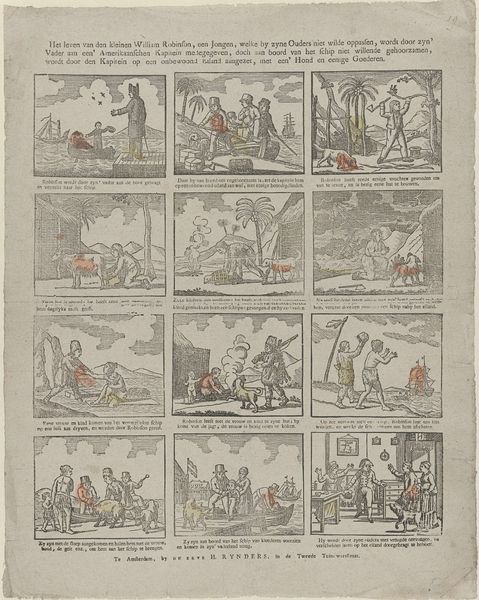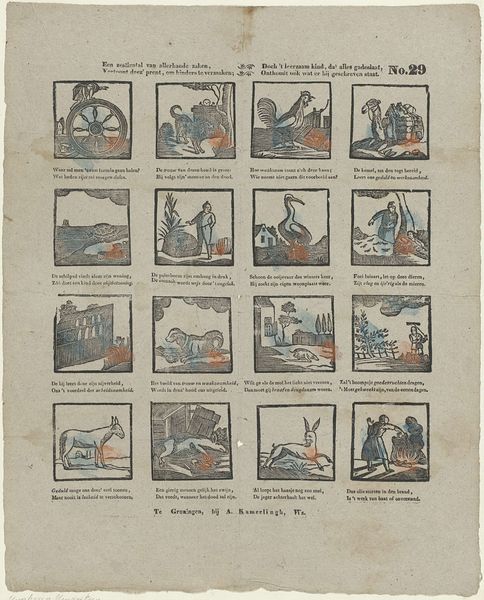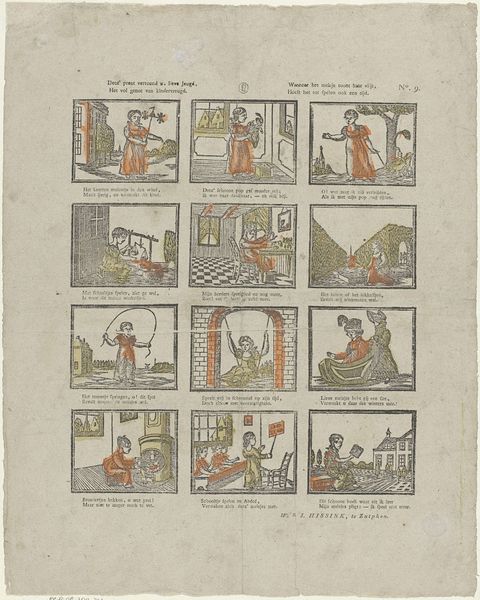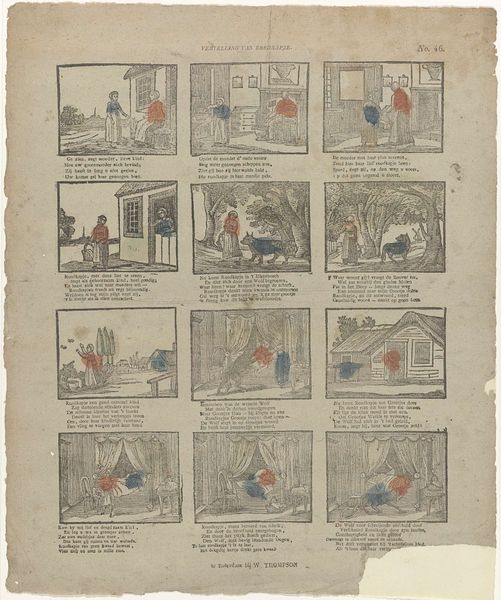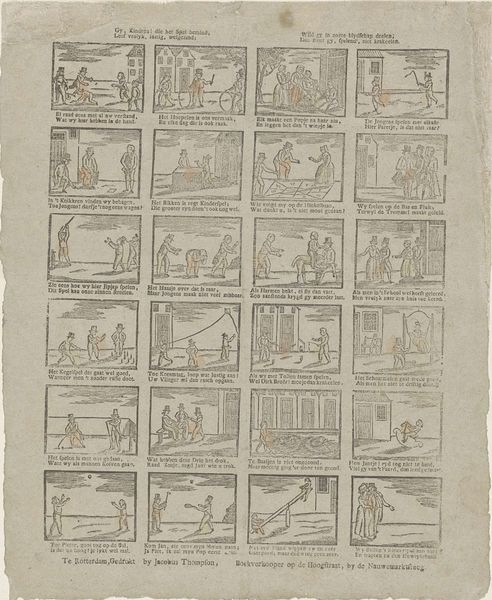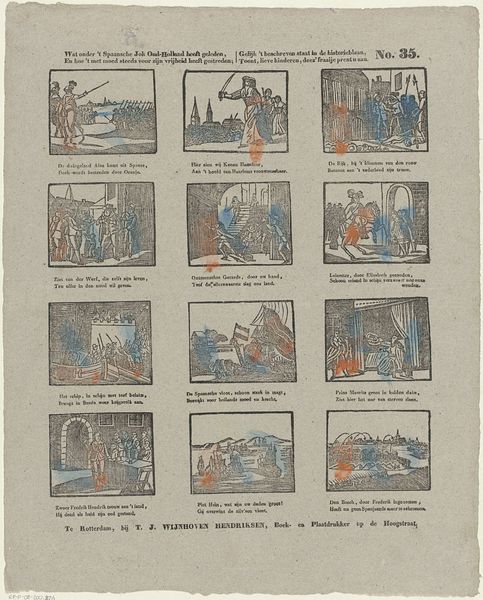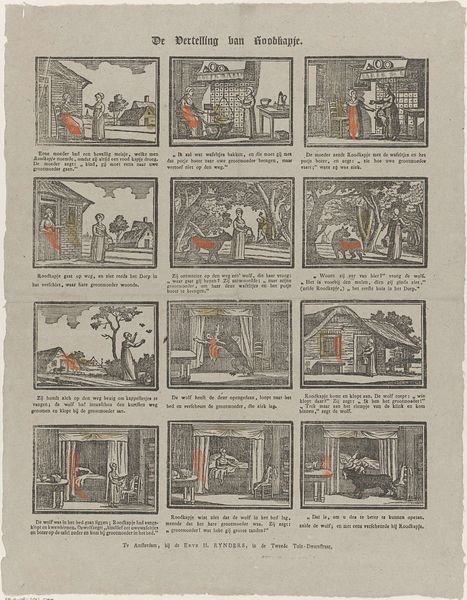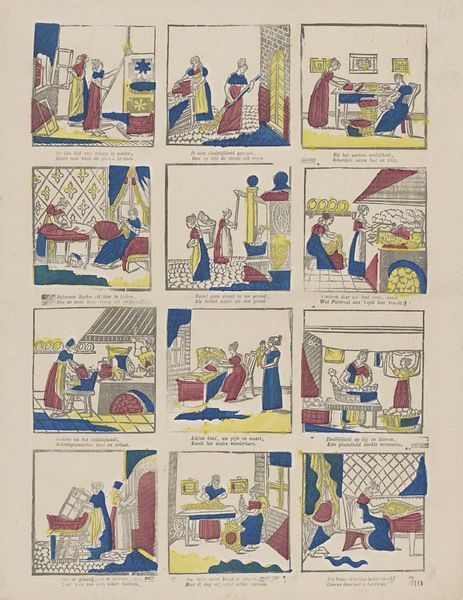
Dit prentgeschenk leert u van Speyk, / Door moed beroemd, in deugden ryk, / En leert dat de geschiedenis, / Van uwen tyd heldhaftig is 1831 - 1837
0:00
0:00
graphic-art, print
#
graphic-art
#
narrative-art
# print
#
comic
#
genre-painting
#
history-painting
Dimensions: height 405 mm, width 334 mm
Copyright: Rijks Museum: Open Domain
Curator: This hand-colored print, created by W. & J. Hissink between 1831 and 1837, is titled "Dit prentgeschenk leert u van Speyk…," which translates to something like, "This print gift teaches you about Speyk..." Editor: It immediately strikes me as rather charming, in a simple, storybook kind of way. The arrangement of the eight scenes in sequence and its modest color palette feels familiar. Is it intended for children? Curator: Indeed, these prints were often given as gifts to children. The narratives celebrated figures like Jan van Speyk, a Dutch naval hero. Let’s consider how the print employs accessible visuals to communicate the historical context and patriotic values during a pivotal moment for the young Kingdom of the Netherlands. Note how the story unfolds through these small, sequential scenes – like panels in a comic strip. The very materiality of this printed image reflects its widespread availability and intended consumption within Dutch society. Editor: Focusing on its formal elements, I’m drawn to the way each vignette employs simple lines and basic coloration to convey complex events. Take, for example, the final panel showcasing the explosion; notice how the bold lines and contrast attempt to communicate a sense of dynamic action. What is your impression? Curator: To me, the charm of the colors belies the serious content. These aren’t just lines on paper. Consider the labor behind the print production itself, think about the cultural work of promoting nationalist heroes to the middle class, and the mechanics of building a unified sense of national identity. Editor: A crucial observation! From a formal standpoint, the inclusion of short explanatory text accompanying each scene integrates linguistic and visual semiotics to tell a distinct story. The choice to include a title at the very top, in old Dutch font, further adds to its character, while serving a clear function of explicitly communicating its subject. Curator: Thinking about our contemporary context, examining the labor, production, and intended purpose gives us invaluable insight into 19th-century Dutch society. Editor: It is remarkable how closely studying these images and their visual elements allows one to perceive history and culture with renewed vision.
Comments
No comments
Be the first to comment and join the conversation on the ultimate creative platform.
